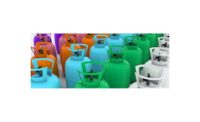Developing and maintaining a world-class HVACR training program requires much more effort and dedication than many people realize. Even when created, staffed, and started, industry changes and advances dictate that the program remain in a constant state of flux, especially if it is to continue to act as a viable pipeline to the HVACR workforce.
In just the past few years, the HVACR world has undergone a transformation from an electromechanically-based to a digitally-based industry. Significant technological changes include linking equipment with Wi-Fi technology, remote system monitoring, high-tech service tools and instrumentation, data center cooling technologies, ductless split systems, variable refrigerant flow systems, and variable refrigerant temperature control strategies.
One of the most important roles of a school administrator is hiring well-qualified, highly motivated HVACR instructors. When the right people are hired, and a strong team is assembled, half of the ongoing battle is won. The other half of the battle involves giving the instructional staff the resources to ensure the continued success of the program.
By far, the biggest mistake an HVACR training program can make is to hire an instructor who is not fully qualified and properly trained to teach. Doing so will generally result in student dissatisfaction and an unfavorable perception of the program.
The following are some suggestions for hiring top-shelf HVACR instructors.
- Be sure to hire instructors that have extensive knowledge in the areas of the industry that the program encompasses. There is little benefit to hiring someone with a 30-year chiller rebuilding career when the program concentrates on residential and light commercial systems. Similarly, hiring someone with a 30-year residential background does little to help an HVACR program that concentrates on industrial ice-making systems.
- Be sure to hire instructors that have had the benefit of formal HVACR training. Those with formal training are more likely to understand, and be able to teach, the physics and theories of HVACR technologies and thermodynamics needed for success in the industry. Most individuals working in the HVACR industry learned the trade from others in the industry and have not received formal training. Since most HVACR instructors come from the field, it is often the case that many instructors have never received proper HVACR training themselves.
- Whenever possible, hire instructors that have teaching experience. Having knowledge of HVACR systems does not mean that an individual has the ability to teach. Success in the field does not necessarily translate into success in front of the classroom. Many HVACR instructors in front of the classroom today have no formal teacher-training and are teaching a subject in which they have had no formal training.
- To make the hiring of effective, knowledgeable, and dedicated instructors easier, it is a great idea to follow HVAC Excellence’s standard for hiring qualified instructors. This standard, which is embraced by many HVACR training programs, whether or not they are accredited, establishes the minimum requirements for HVACR educators. This helps ensure that HVACR students have access to high-quality training, which can ultimately lead to better employment opportunities. For reference, HVAC Excellence Standard 9.1 is provided here:
Each Instructor shall:
- Have a minimum of five years of experience as an HVACR field service technician or higher, that directly relates to the competencies being taught.
- Hold a valid Refrigerant Transition and Recovery Universal Certification, as required by 40 CFR Part 82, Subpart F of Section 608 of the Clean Air Act of 1990.
- Meet all criteria as set forth as a technical educator established by your state, local government, or authority having jurisdiction of the program.
- Be able to conduct demonstrations, provide explanations, and convey ideas, concepts, and theories for all aspects of the curriculum.
- Reflect an image of high ethical values, honesty, tactfulness, patience, and friendliness toward others.
- Meet one or more of the following:
- Be a graduate of an HVACR program consisting of a minimum of 600 hours of training
- Hold an associate degree in HVACR technology
- Hold the title of Certified Master HVACR Educator (CMHE)
- Be working towards their CMHE by completing two educator-specific credentialing exams each calendar year
- Adjunct instructors must pass an educator-specific credentialing exam in each of the disciplines that directly relate to the competencies that they teach, within 12 months of employment
- Hold a bachelor's degree in HVACR or building science trades technology
Now That You’ve Hired Them, You Need to Keep Them!
Once the right educator has been located, hired, and added to the instructional staff, the work is not over. It is often difficult to make the transition from the field to the classroom. New challenges will face them, so they must be given the tools they need to succeed. A large percentage of new instructors leave the teaching profession and return to the field within three years, mainly because they felt a lack of support from the program and its administration. Therefore, it is incumbent upon the school administration to provide instructors with the support needed to help ensure success. Here are some key elements that should be considered to help develop, retain, and maintain a high-quality teaching team.
Mentoring
To help instructors transition from the field to the classroom, an instructor mentoring program should be established and maintained. A good mentoring program allows for a new instructor to work daily with a seasoned instructor for a recommended period of two months. During this period, the new instructor will gain insight into developing effective lesson plans, learn about various teaching techniques, learn how to evaluate students, develop time management skills, master presentation skills, and learn how to incorporate teaching aides into their instruction. Additionally, instructors can learn the importance of properly completing and filing all required reports.
Professional Development
When a person’s role changes from technician to instructor, so should the type of professional development they obtain. Instructors should be encouraged to attend professional development specifically targeting HVACR instructors. Not only will they learn more about new and emerging technologies, but they will also be able to interact with other instructors who can share their experiences and success stories. For example, if they attend the HVAC Excellence Trainers Conference, they will likely meet people who have been teaching HVACR for twenty or more years. Sure, they make it look easy, but that is because someone took the time to give them the resources they needed to successfully transition from the field to the classroom.
Credentialing
Many instructors hold various types of technician certifications. However, this does not guarantee that they possess the depth of knowledge to adequately prepare their students for success. This can only be accomplished through specialized credentialing exams, custom designed for HVACR instructors. Instructors should be challenged to verify the depth of their knowledge through credentialing. The results of these credentialing exams can be used to create customized professional development plans for each instructor.
Nurturing
With the right training and support, highly effective technicians can become highly effective instructors that prepare others for success. Just as our children need nurturing to become productive members of our family and society, instructors need to be nurtured to help ensure that they become productive members of the teaching staff. A well-prepared, well-trained, and highly motivated teaching staff will, in turn, be well-equipped and well-prepared to nurture their students, creating a stronger HVACR workforce.
Want more HVAC industry news and information? Join The NEWS on Facebook, Twitter, and LinkedIn today!









